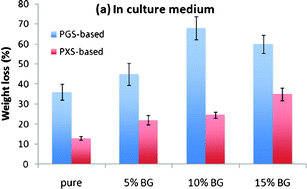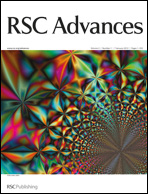Poly(glycerol sebacate) (PGS) is a soft elastomer suitable for tissue engineering of soft types. However, the rapid degradation kinetics of this polyester has become one of the major drawbacks in the application of tissue engineering. In this work, a comparative study on in vitro enzymatic degradation of PGS- and poly(xylitol sebacate) (PXS)-based materials has been conducted, using a recently established in vitro experimental protocol. This protocol, which can simulate and predict in vivo enzymatic degradation kinetics of polymer implants, was further refined in this work. The comparative study was conducted in tissue culture medium and a buffer solution of pH optima, under static and cyclic mechanical loading conditions. It was found that in vitro enzymatic degradation rates of the PXS-based materials were significantly slower than those of PGS in both the tissue culture medium and buffered solution of pH optima (pH 8). The in vitro enzymatic degradation of PGS-based biomaterials tested was about 0.1–0.4 mm month−1 in tissue culture medium, while the rates were in the range of 0.05–0.2 mm month−1 for PXS-based materials. Enzymatic degradation was enhanced in relation to mechanical deformation, whereas PXS-based materials were influenced little. Hence, PXS, which is as soft as PGS but degrades significantly slower than PGS, is a better option for applications in tissue engineering of soft types.

You have access to this article
 Please wait while we load your content...
Something went wrong. Try again?
Please wait while we load your content...
Something went wrong. Try again?


 Please wait while we load your content...
Please wait while we load your content...